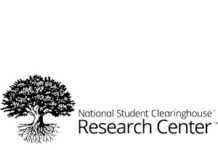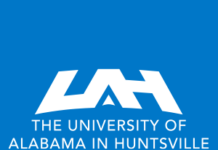 Recently, the nation’s highest-ranked colleges and universities informed applicants if they had been accepted for admission into the Class of 2022. Some of these institutions have become extremely selective, accepting less than 10 percent of all applicants. Some of the nation’s most selective institutions provided acceptance data broken down by race and ethnicity.
Recently, the nation’s highest-ranked colleges and universities informed applicants if they had been accepted for admission into the Class of 2022. Some of these institutions have become extremely selective, accepting less than 10 percent of all applicants. Some of the nation’s most selective institutions provided acceptance data broken down by race and ethnicity.
Pomona College in Claremont, California, accepted only 6.9 percent of the 10,245 students who applied for admission into the Class of 2022. African Americans make up 12.8 percent of the admitted students.
At Johns Hopkins University in Baltimore, 29,128 students applied for admission to the Class of 2022. The university accepted 2,894 students, or 9.9 percent of all applicants. Blacks make up 14 percent of all accepted students.
Williams College in Williamstown, Massachusetts, offered admission to 1,163 students from a pool of 9,559 applicants. Of the admitted students 187 are Black. Thus, Blacks make up 16.1 percent of all students offered admission.
Harvard University accepted 1,962 students from a record applicant pool of 42,749 students. Thus, Harvard accepted just 4.6 percent of all applicants. African Americans make up 15.5 percent of all students offered admission at Harvard.
At the University of Southern California in Los Angeles, about 8,200 students were accepted from a pool of 64,000 applicants. Blacks make up 6 percent of all accepted students.
At New York University, 15,722 students were offered admission from a pool of more than 75,000 applicants. The number of African American students accepted for admission is up 33 percent from a year ago. Blacks make up 11 percent of all accepted students.












The term ‘admitted’ as used here is specious. For example, Pomona my have ‘admitted’ 13% of blacks, but only has a 5% black enrollment. This is because the colleges listed are making offers to the SAME BLACK STUDENTS from a small, very talented, cohort blacks that apply top tier. These sharp blacks wisely eschew Early Decision and shop the elite schools via Regular Admissions, searching for the best aid packages. The article as written implies elite colleges have ENROLLMENTS that match the black demographic, when in fact blacks are UNREPRESENTED by 200 – 500% at theses schools. JBHE should know better.
We are well aware of the difference between admitted students and those who enroll. We are simply reporting the data on accepted students. Our annual surveys have tracked first-year enrollments of Black students at the nation’s high-ranking colleges and universities for 25 years.
Good point. These same black students may have applied to an elite school via early decision but went ahead and applied regular decision to elite schools of similar caliber, screwing the data to make it seem that a high number of blacks applied to and were accepted to a single school when in actuality it those same blacks who were offered admission at Harvard were also accepted to Pomona on the opposite coast. Very misleading, JBHE.
There are 3 stages in the college enrollment process: applications. admissions and enrollment. JBHE reports the numbers for top national universities and liberal arts college as they become available each year. Their final report on enrollment numbers (the last available) also includes numbers for the applicant and admit stages so that the comparison you mention can be made. It offers a great picture of how enrollment representation compares to the other 2 figures at each campus and how all 3 compare across different campuses. Best source for the big picture I’ve been able to use. One figure that could be added (re: your point about representation) would be the % of African Americans in each campuses home state. By that measure, I’ve come to the conclusion that California schools like Pomona are doing a lot better than campuses in other states with much larger African American shares of the state population. There % African American enrollment is much closer to their % African Americans in the state population. This was also true for CA major public universities until the passage of CA state Proposition 209, which banned affirmative action in California. Public universities and colleges in states with relatively large African American %’s in their state populations AND can still legally use affirmative action as a complementary corrective tool should be doing MUCH better in their African American enrollment. Imo.
How is that the fault of the college? Are recruiters expected to knock on doors and beg black college-age students to apply? Criticizers are slow to close the % of black applicants vs. admitted students across racial demographics. Only 1/3 of the Black population is college age (18-40), if even 4% of any school’s population is Black it matches the countries overall population – what more do you want?